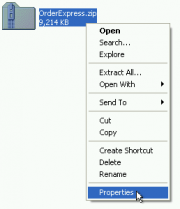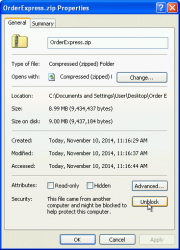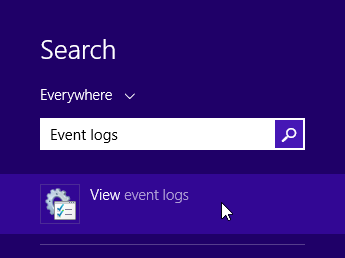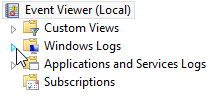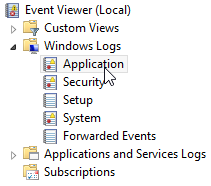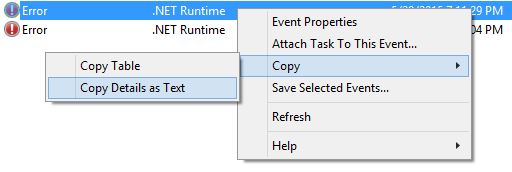Difference between revisions of "Order Express - Advanced Troubleshooting"
m (Sowens moved page Troubleshooting Order Express to Order Express - Advanced Troubleshooting: rename page) |
m |
||
| Line 127: | Line 127: | ||
</ol> | </ol> | ||
| − | |||
| − | |||
Revision as of 14:46, 11 July 2016
Contents
Standalone Version
In order to debug certain issues, eVision Support may provide you with a link to download a Standalone Version of Order Express. This version of Order Express does not require installation and is primarily used to identify whether an issue is caused by a broken installation, or with Order Express directly.
- Open the link that was provided to you by eVision Support
- Click the Download button on the page and save the file to your desktop
- Extract the downloaded file to a folder. (Note: Ensure the file is not marked as "Blocked" before you perform the extraction.)
- Open the folder and locate the executable file for the application
- If the program loads up successfully, the issue is the result of the installation routine. Perform the Extended (Full) Uninstall on the Uninstalling Order Express page.
- If the program does not load successfully, the cause of the issue is within the application.
- Ensure that you communicate the results of this test back to eVision Support for additional troubleshooting steps.
Standalone Version Will Not Connect
There exists a security feature within Windows that can sometimes prevent Standalone Versions of Order Express from working correctly. Files that are downloaded from an non-trusted web location are marked as "Blocked" by default, preventing them from retrieving content from the internet. The solution for this issue is to "unblock" the downloaded file.
- Right-click on the file that was downloaded from the internet.
- Select
Propertiesfrom the context menu. - Find the
Unblockbutton at the bottom of the dialog, and click it. - The file can now be opened. If the file is a zip file, it can now be extracted.
Note: If the blocked file is a zip file, it must be unblocked prior to extracting it, or you will likely encounter issues with the unzipped files.
Duplicate DbProviderFactories
Due to an issue in certain software, you may receive the following error:
The 'DbProviderFactories' section can only appear once per config file.
This occurs because the Machine.config file on the computer contains erroneous information and must be fixed by hand.
- Locate the
machine.configfile. Refer to the Machine.config article for instructions on locating it. - Once found, make a backup of the file and put it in a safe location.
- Open the original file in a text editor and search for
<DbProviderFactories>. This text should appear more than once. - Compare your file to the block of text below. If the file contains text that matches this, delete the text.
<system.data>
<DbProviderFactories>
<add name="IBM DB2 for i5/OS .NET Provider" invariant="IBM.Data.DB2.iSeries" description=".NET Framework Data Provider for i5/OS" type="IBM.Data.DB2.iSeries.iDB2Factory, IBM.Data.DB2.iSeries, Version=12.0.0.0, Culture=neutral, PublicKeyToken=9cdb2ebfb1f93a26" />
</DbProviderFactories>
</system.data> - Ensure that the file is saved before exiting the text editor.
- The issue should now be resolved.
Event Log Errors
Order Express may occasionally crash without allowing the user to describe and submit the error to the support team.
When this occurs, the user will need to retrieve the log files and submit them manually.
Instructions
- Press the "Windows" key, or click the "Start" button in the bottom-left corner of the screen.
-
Once on the Start screen, type the text
Event Logs. A search box should display as you begin typing.
Wait for the search results to appear.
Click the top entry, which should readView event logs.
-
In the window that appears, click the arrow to the left of
Windows Logs
-
Select the
Applicationentry.
-
In the list shown in the middle of the window, locate the most recent entry that meets the following criteria:
-
Right-click on that entry, select
Copy, and then selectCopy Details as Text.
- At this point, the contents of the error log are on your clipboard, and can be pasted into any text editor.
-
Open a text editor (such as Notepad), and use the
Pastecommand to insert the error details. - Save the text document, and attach it to an email to our support team.


